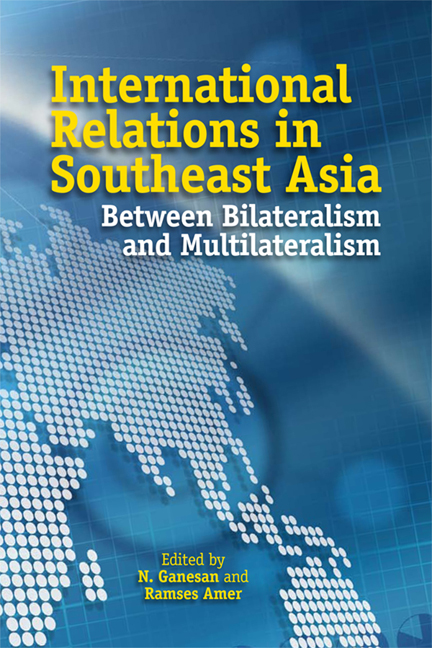Introduction
Published online by Cambridge University Press: 18 November 2017
Summary
The central theme of this book is the utility of bilateralism and multilateralism in Southeast Asian international relations. The intention was to examine a sufficient number of empirical cases in the Southeast Asian region since the mid-1970s so as to establish a pattern of interactions informing a wider audience of interactions unique to the region. Through these case studies, we seek to identify how this pattern of interaction compares with similar experiences elsewhere vis-à-vis the theoretical underpinnings of multilateralism and bilateralism. Consequently, this book also examines the theoretical drift in international relations literature at the broadest level and the overall drift of Southeast Asian international relations between the nations themselves and the Association of Southeast Asian Nations (ASEAN).
Since the post–Cold War period, multilateralism has gained prominence as an approach for forging international consensus on a number of issues. Multilateralism quite simply refers to three or more countries coming together to deal with issues of common interest, whether they be positive or negative. During the Cold War, forging multilateral consensus on issues tended to be much more difficult given the ideological differences between the Soviet-led bloc and the U.S.-led bloc. The level of mutual distrust between those two blocs was so evident that each considered the other its antithesis. To further complicate the situation in Pacific Asia, deep conflicts emerged between communist countries, which pitted the Soviet Union against China, and Vietnam against both Cambodia and China.
With the end of the Cold War and the implosion of the Soviet Union in 1991, there has been far better accommodation between the communist/ socialist countries and the liberal democratic states. This accommodation witnessed a greater willingness on the part of the international community to seek common solutions to common problems, from civil war in Cambodia to collapsed states like Somalia and hunger in Ethiopia. The period also witnessed the international community's willingness to assign immediate tasks to international regimes for resolution. This mood in turn led to the empowerment of international agencies, in particular those associated with the United Nations.
- Type
- Chapter
- Information
- International Relations in Southeast AsiaBetween Bilateralism and Multilateralism, pp. xv - xxPublisher: ISEAS–Yusof Ishak InstitutePrint publication year: 2010

